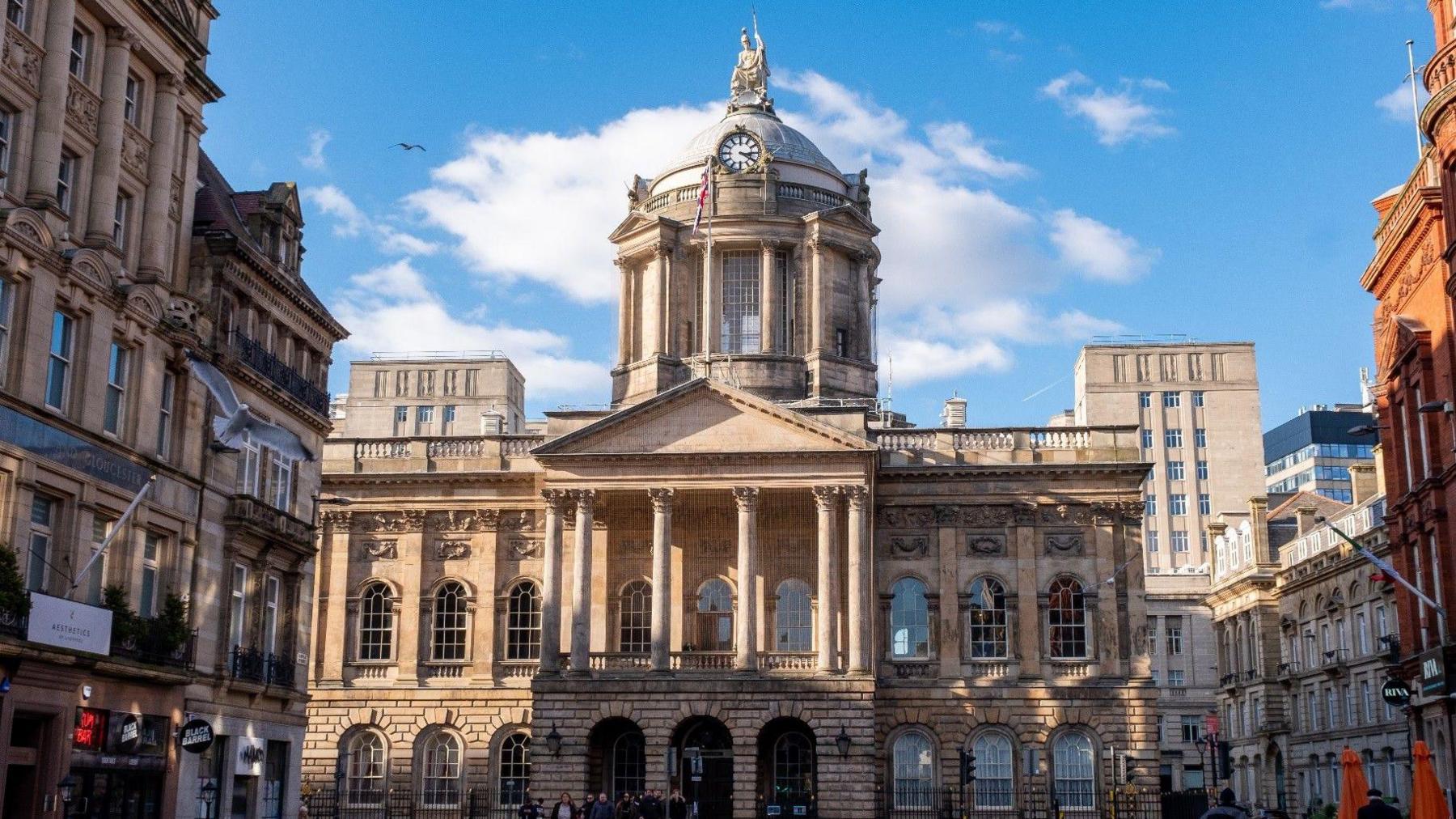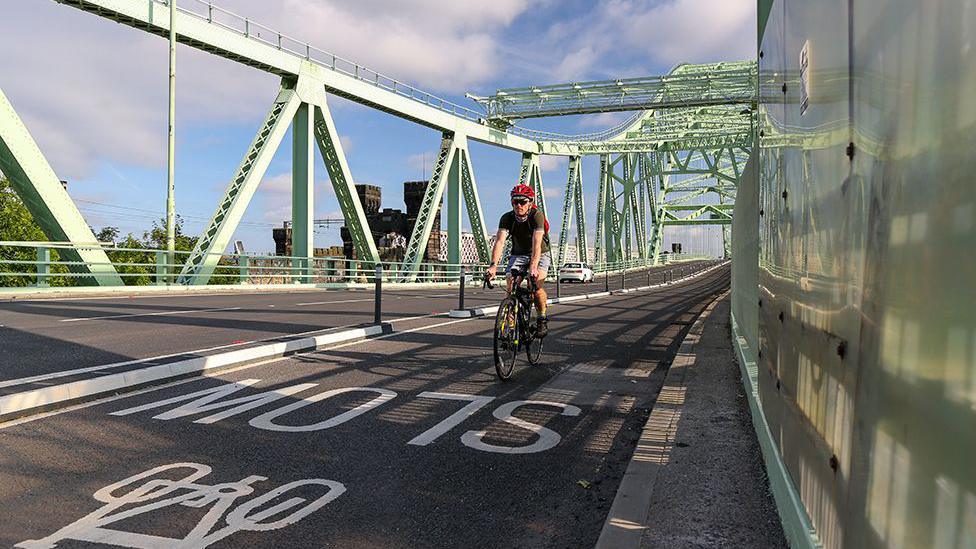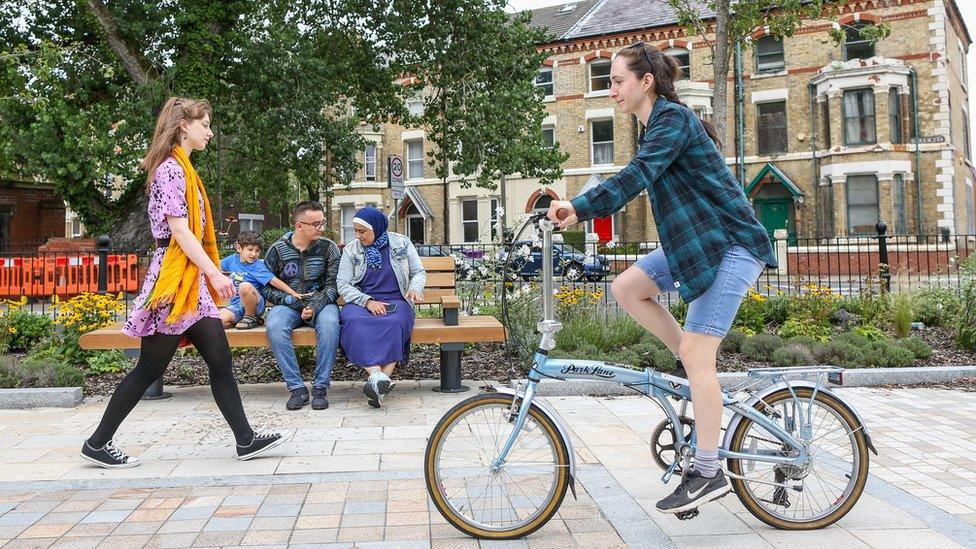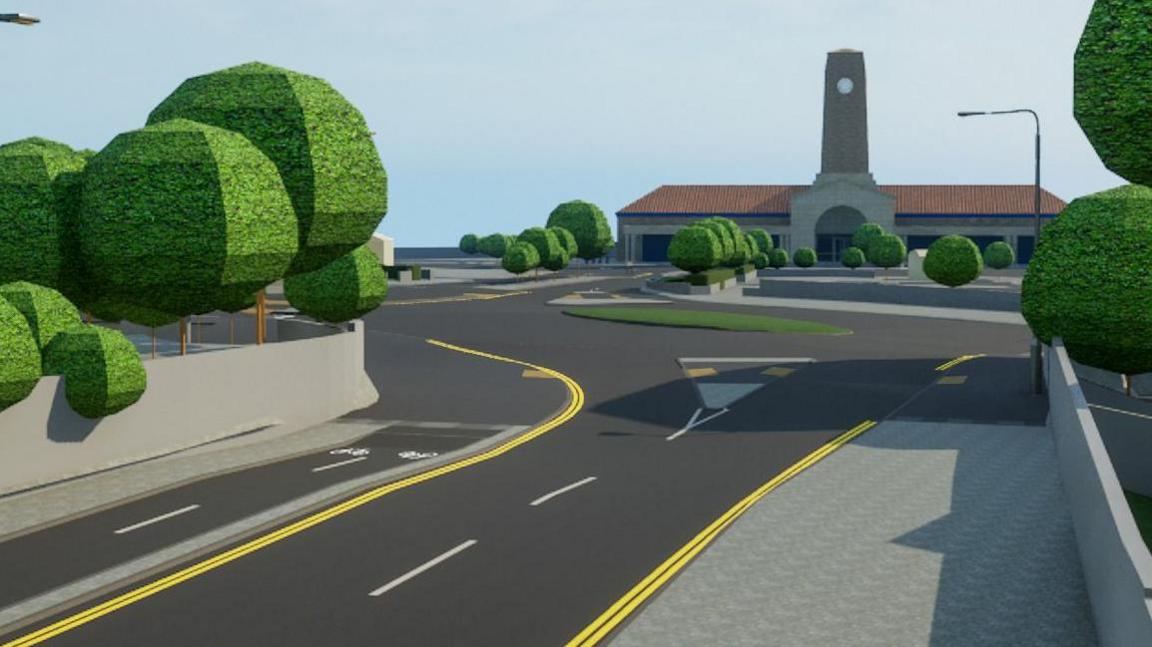What is Liverpool's 20-year travel masterplan?

Liverpool City Council said the cornerstone of the Liverpool Urban Mobility and Public Spaces Plan is to future proof the city centre.
- Published
Councillors are set to approve a "travel masterplan" that they hope will transform the way people move around Liverpool city centre during the next 20 years.
The council says the Liverpool Urban Mobility and Public Spaces Plan, external is designed to "future proof" the city centre.
It boasts of a "fully integrated" public transport system and "vibrant public spaces" which will create an "exceptional urban experience".
"Strategies such as this are key in driving the city forward into a future that prioritises people over cars, and creates an attractive and sustainable environment for us all," says Councillor Dan Barrington, cabinet member for transport and connectivity.
A report submitted to Liverpool City Council's next cabinet meeting on 21 January will recommend the plan's approval.
Why is there a masterplan?
The council says its plan will guide a multi-million pound investment programme over the next 20 years, designed to both increase the use of public transport and encourage people to walk and cycle more.
It also forms a key part of the local authority's determination to achieve "net-zero" status. Put simply, this means no longer adding to the total amount of greenhouse gases in the atmosphere, which cause global warming.
Liverpool's plan builds on the city centre connectivity programme, which saw more than £50m invested in upgrading key routes such as Lime Street and The Strand, and developing travel routes from the waterfront to the Knowledge Quarter.
What are the quick wins?
The council says "quick win" schemes will allow for immediate progress while it works on longer-term projects.
Short-term initiatives include:
Improving Castle Street and better linking the business district with the rest of the city centre
Working with others, including the Liverpool City Region's Combined Authority, to improve the appearance of Monument Place and London Road as well as develop bus priority measures
Improving the area around Moorfields Station
Making St George's Gateway easier to navigate for pedestrians and introducing better public transport links
Developing a city-centre parking strategy
What are the long-term projects?
In the longer term, the council says the plan contains proposals to change bus routes to improve connectivity across Liverpool, as well as with the city centre's two main underground railway stations.
The council says it will align with other transport initiatives, including its Local Cycling and Walking Infrastructure Plan, external, to encourage people to walk or cycle more, rather than relying upon their cars.
It says it will be supported to do this through the provision of a safe, accessible and inclusive transport system, powered by clean vehicles.
It will also focus on enabling sustainable travel, for example by reducing transport's carbon footprint.
Get in touch
Tell us which stories we should cover on Merseyside
Listen to the best of BBC Radio Merseyside on Sounds and follow BBC Merseyside on Facebook, external, X, external, and Instagram, external.
- Published23 July 2024

- Published16 January 2023

- Published17 July 2024
